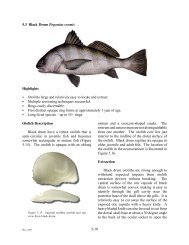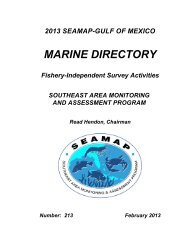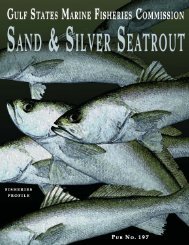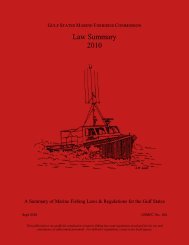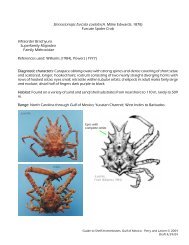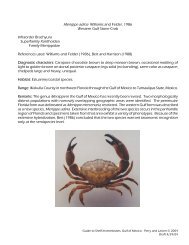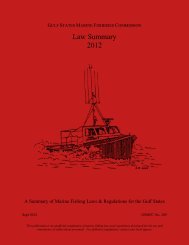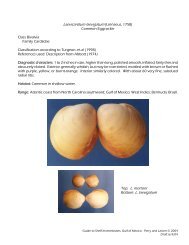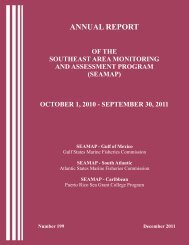Guidelines for Marine Artificial Reef Materials, Second Edition
Guidelines for Marine Artificial Reef Materials, Second Edition
Guidelines for Marine Artificial Reef Materials, Second Edition
Create successful ePaper yourself
Turn your PDF publications into a flip-book with our unique Google optimized e-Paper software.
Lime (calcium hydroxide) in "green" or uncured cement may have surface pH levels of 10 to 11,<br />
which is significantly more basic than seawater, which has a pH of 8.3. This can make the surface<br />
of uncured concrete toxic to invertebrate organisms <strong>for</strong> 3 to 12 months. Pozzalanic materials can<br />
help to neutralize the surface pH by combining with the free lime. Such materials include coal<br />
combustion fly ash, diatomaceous earth, clays, shales, pumicites, micro-silica, among others. A<br />
pozzalanic material reacts with the free lime, lowering the pH and also providing <strong>for</strong> better bonding<br />
between aggregates, thus making the concrete stronger. The majority of concrete used in reef<br />
applications is not used in the “green” or uncured <strong>for</strong>m. Most imperfect culvert, bridge or road<br />
decking or demolition debris has aged and cured <strong>for</strong> many months or years prior to deployment as<br />
reefs. An estuarine reef made from concrete culvert in Delaware Bay exhibited the rapid<br />
development of an epifaunal community, dominated by the polychaete worm, Sabellaria vulgaris.<br />
Biomass and species diversity equaled that of the adjacent infaunal community less than two months<br />
after deployment.<br />
Research and development studies, conducted by the Portland Cement Association, have<br />
characterized the long- term per<strong>for</strong>mance of concrete exposed to sea water (Stark 1995). Where<br />
freezing and thawing is not an issue, as is the case with reef materials, the report concludes “Based<br />
on the 32 to 34 year per<strong>for</strong>mance observations… All concretes exhibited a high level of durability<br />
in seawater exposure, regardless of ASTM type of Portland cement. The ratio of water to total<br />
cementitious material and quantity of air entrainment and pozzolans appears to be of little or no<br />
significance in the observed durability of concrete.” Other studies have tested strength of concrete<br />
in seawater over a 30-50 year period. In all tests, concrete of various types continued to gain<br />
compressive strength which continued to increase over the period of observation (Portland Cement<br />
Association, personal communication). This increase in strength is due to the continuing hydration<br />
of the cement on a molecular level. The duration of these studies has not been sufficient to measure<br />
how long this strengthening process may continue, but estimates range from many decades to<br />
hundreds of years.<br />
In a search of the available literature, the earliest reports regarding the use of concrete <strong>for</strong> artificial<br />
reefs was 1962 (Martinez 1964); however, while not reported in the literature, in 1962, 300 tons of<br />
concrete pipe were sunk off Perdido Pass, Alabama, in approximately 60 feet of water. Similarly,<br />
concrete pipes were utilized <strong>for</strong> Alabama offshore reefs in 1964, 1970, 1971, and 1977 (Walter<br />
Tatum, personal communication). During the 1980s, three bridges were replaced in the Alabama<br />
-7-




